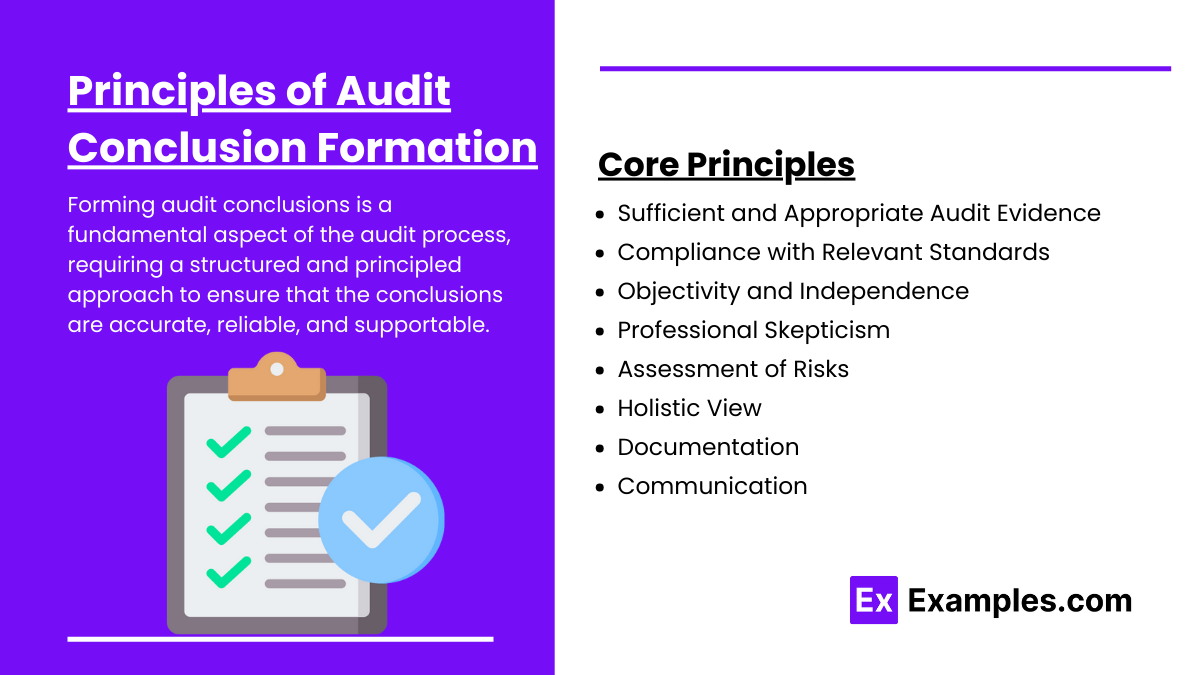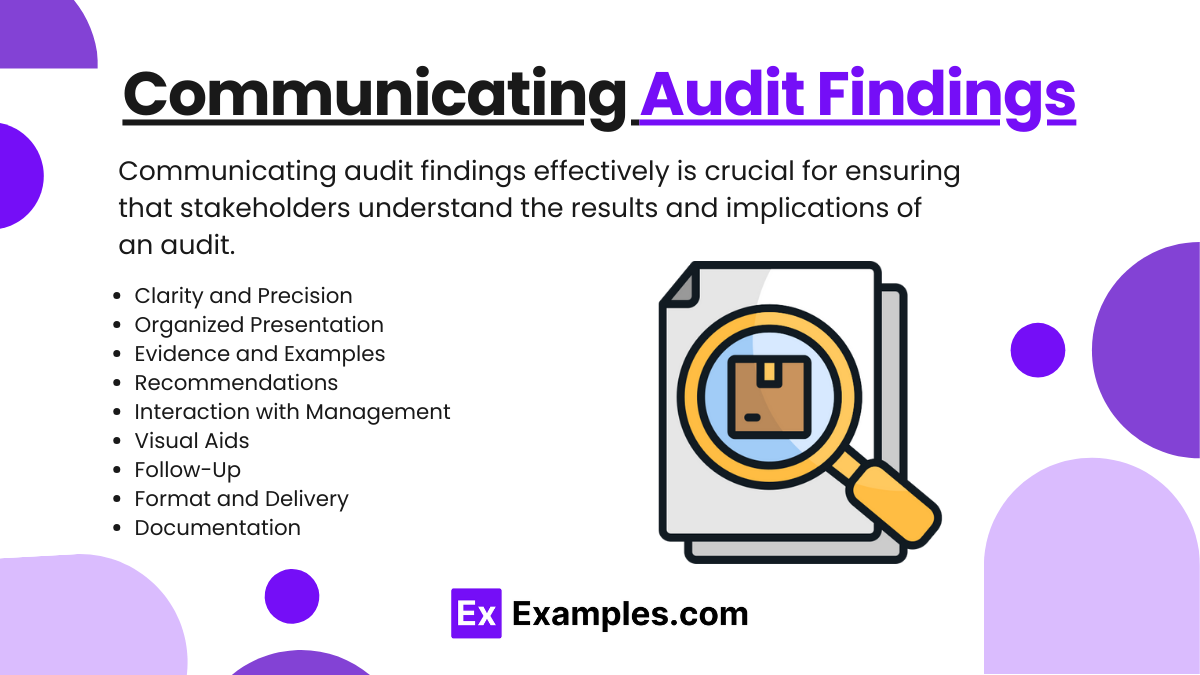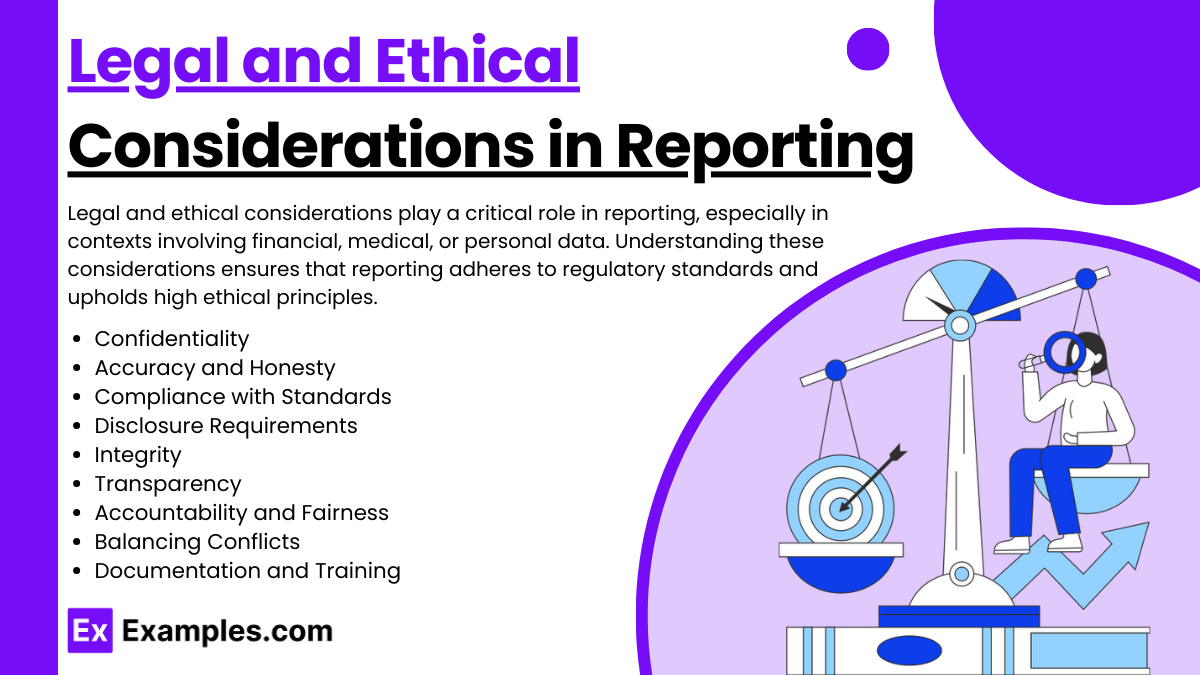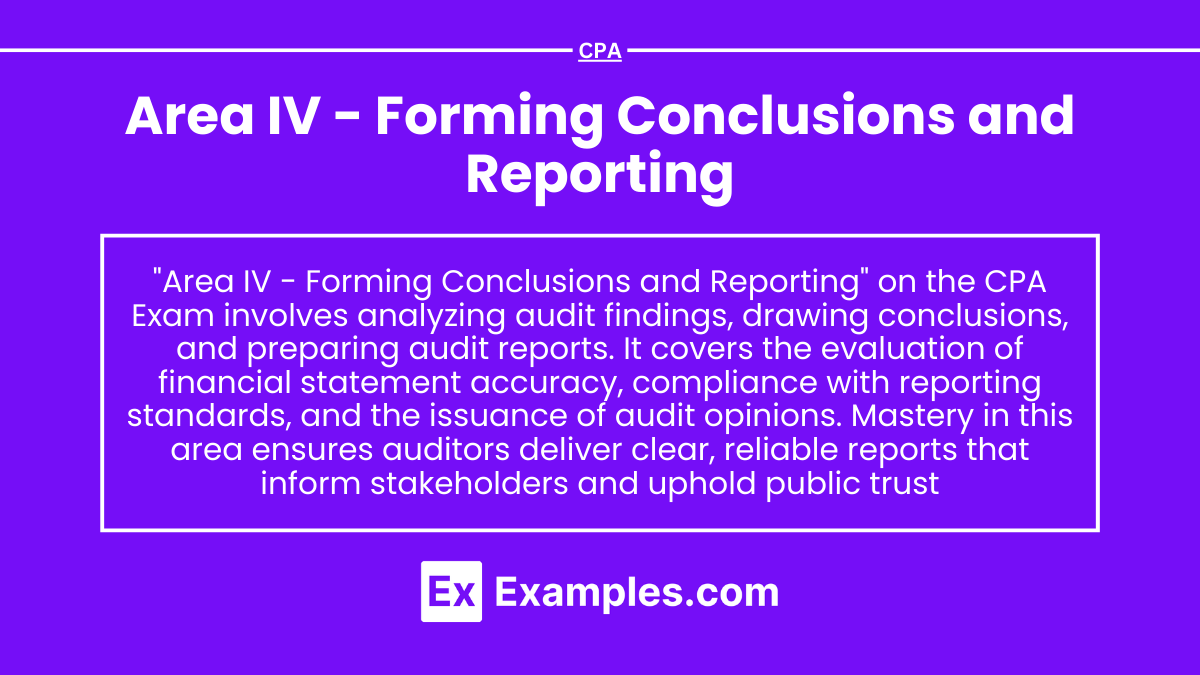Preparing for the CPA Exam requires a deep understanding of “Area IV – Forming Conclusions and Reporting.” Mastery of synthesizing audit findings and communicating them effectively is essential. This knowledge enables you to draft conclusive audit reports and provide recommendations, crucial for maintaining transparency and accountability, key to achieving a high CPA score.
Learning Objective
In studying “Area IV – Forming Conclusions and Reporting” for the CPA Exam, you should aim to master the process of analyzing audit evidence and forming substantiated conclusions. Learn to critically evaluate audit results, ensuring they are based on sufficient and appropriate evidence. Understand the principles of clear, concise, and objective reporting in the context of audit findings. Additionally, explore techniques for effectively communicating conclusions to stakeholders, including how to articulate recommendations for improvements and compliance. Apply this knowledge to prepare detailed and accurate audit reports that meet professional standards and are essential for successful practice and high CPA exam scores.
Principles of Audit Conclusion Formation

Forming audit conclusions is a fundamental aspect of the audit process, requiring a structured and principled approach to ensure that the conclusions are accurate, reliable, and supportable. Here are the core principles that guide auditors in forming audit conclusions:
- Sufficient and Appropriate Audit Evidence: Conclusions must be based on enough evidence of high quality, ensuring the conclusions are robust and defensible.
- Compliance with Relevant Standards: Audits need to adhere to established auditing standards such as GAAS or ISA to maintain consistency and quality.
- Objectivity and Independence: Auditors must remain unbiased and independent, avoiding conflicts of interest and maintaining professional integrity.
- Professional Skepticism: A mindset of questioning and critical assessment helps identify potential misstatements due to error or fraud.
- Assessment of Risks: Evaluating risks of material misstatement and the effectiveness of internal controls is crucial.
- Holistic View: Integrating information across various audit areas provides a comprehensive understanding of the entity’s operations and financial status.
- Documentation: Proper documentation is essential to trace the logic and evidence behind each conclusion.
- Communication: Effective ongoing communication with stakeholders, such as management and audit committees, ensures clarity and addresses potential issues promptly.
Communicating Audit Findings

Communicating audit findings effectively is crucial for ensuring that stakeholders understand the results and implications of an audit. Here’s a streamlined guide on how to communicate these findings:
- Clarity and Precision: Use clear, concise language and be specific about the findings and their implications for the financial statements.
- Organized Presentation: Structure the findings logically, using headings and subheadings to make the document easy to navigate.
- Evidence and Examples: Support findings with concrete evidence and provide examples to illustrate issues. Where possible, quantify the impact.
- Recommendations: Include actionable recommendations for addressing findings, and suggest a prioritization based on risk and impact.
- Interaction with Management: Present a section for management’s response to the findings and encourage two-way communication to discuss and clarify issues.
- Visual Aids: Utilize charts, tables, and graphs to clearly summarize and explain complex data.
- Follow-Up: Outline necessary follow-up actions and any planned reviews to ensure implementation of corrective actions.
- Format and Delivery: Communicate findings through a formal audit report and consider using presentations for direct discussions with key stakeholders.
- Documentation: Ensure comprehensive documentation of all findings, communications, and responses for accountability and transparency.
Legal and Ethical Considerations in Reporting

Legal and ethical considerations play a critical role in reporting, especially in contexts involving financial, medical, or personal data. Understanding these considerations ensures that reporting adheres to regulatory standards and upholds high ethical principles. Here’s an overview of the main legal and ethical aspects to consider:
- Confidentiality: Laws mandate the protection of sensitive information, requiring adherence to privacy regulations like GDPR or HIPAA.
- Accuracy and Honesty: Legal standards demand truthful reporting; false statements can lead to serious legal consequences under acts like Sarbanes-Oxley.
- Compliance with Standards: Specific fields require adherence to reporting standards, such as GAAP in accounting, which are legally binding.
- Disclosure Requirements: Legally mandated disclosures ensure that essential information, like financial risks, is presented transparently.
- Integrity: Ethical reporting requires fairness and objectivity without bias or manipulation.
- Transparency: Clear and comprehensive information must be disclosed to foster trust.
- Accountability and Fairness: Reporters are responsible for justifying their findings and presenting all sides without discrimination.
- Balancing Conflicts: In cases of conflict between legal and ethical obligations, privacy and transparency must be balanced, with legal requirements often taking precedence.
- Documentation and Training: Regular training on legal and ethical standards and thorough documentation of reporting decisions help maintain compliance and clarity.
Examples
Example 1: Issuing an Unqualified Audit Opinion
- After completing an audit, an auditor finds no material misstatements in the financial statements. This results in an unqualified (clean) opinion, indicating that the financial statements are fair and in accordance with GAAP. This is the most favorable outcome for a company, showing accurate and reliable financial reporting.
Example 2: Providing a Qualified Opinion Due to Scope Limitation
- An auditor is unable to verify certain inventory records because they were destroyed in a warehouse fire. Since sufficient evidence is unavailable, the auditor issues a qualified opinion, stating that the financial statements are accurate except for the inventory records, as a limitation of scope prevented complete verification.
Example 3: Reporting an Adverse Opinion Due to Material Misstatements
- While reviewing a client’s financial statements, an auditor discovers that the company significantly overstates its revenue to appear more profitable. The auditor issues an adverse opinion, indicating that the financial statements do not fairly represent the company’s financial position, signaling serious issues to stakeholders.
Example 4: Issuing a Disclaimer of Opinion Due to Lack of Sufficient Evidence
- When a client fails to provide essential documents, and the auditor cannot perform key procedures, the auditor is forced to issue a disclaimer of opinion. This means no conclusion could be reached due to insufficient audit evidence, warning stakeholders that the auditor’s ability to assess the financial statements was significantly restricted.
Example 5: Reporting Material Weaknesses in Internal Controls
- During an audit, an auditor finds that the client lacks effective segregation of duties in its finance department, increasing the risk of errors and fraud. The auditor documents these findings and communicates them to management and the audit committee, recommending changes to strengthen internal controls and improve financial reporting accuracy.
Practice Questions
Question 1:
An auditor is unable to obtain sufficient evidence about a client’s inventory balance due to severe inventory count restrictions. What is the most appropriate opinion to issue in this scenario?
A. Unqualified Opinion
B. Qualified Opinion
C. Adverse Opinion
D. Disclaimer of Opinion
Answer: D
Explanation:
Step 1: Understanding the Question
This question addresses the appropriate opinion when an auditor cannot obtain sufficient evidence due to restrictions on the audit scope.
Step 2: Analyzing Each Option
- A is incorrect because an unqualified opinion implies that the financial statements are free from material misstatement, which is not the case here.
- B could be issued if there was limited evidence, but in cases of significant scope limitations, it may not suffice.
- C is incorrect because an adverse opinion is given when there is evidence that the statements are materially misstated, not when evidence is missing.
- D is correct, as a disclaimer of opinion is appropriate when the auditor cannot obtain enough evidence to form an opinion on the financial statements.
Step 3: Conclusion
The lack of sufficient audit evidence due to scope limitations warrants a disclaimer of opinion.
Question 2:
Which of the following would most likely cause an auditor to issue a qualified opinion?
A. The auditor finds a material misstatement in revenue recognition policies, but management refuses to correct it.
B. The auditor cannot obtain sufficient evidence for an immaterial account.
C. The company’s financial statements are materially misstated in multiple areas.
D. The auditor observes a material weakness in the internal control system but finds no material misstatements.
Answer: A
Explanation:
Step 1: Understanding the Question
This question assesses when a qualified opinion, which means “except for” a certain issue, is appropriate.
Step 2: Analyzing Each Option
- A is correct because a qualified opinion is issued when a material misstatement exists, but it is limited to a specific area, in this case, revenue recognition.
- B is incorrect because immaterial issues do not affect the audit opinion.
- C is incorrect because multiple material misstatements would likely result in an adverse opinion, not a qualified one.
- D is also incorrect because a material weakness in internal controls alone does not typically affect the opinion unless it results in misstatements.
Step 3: Conclusion
A qualified opinion is appropriate when a specific area, like revenue recognition, is materially misstated and uncorrected, but other areas are fairly presented.
Question 3:
If an auditor finds that a company’s financial statements are materially misstated and do not conform to GAAP, what type of opinion should be issued?
A. Unqualified Opinion
B. Qualified Opinion
C. Adverse Opinion
D. Disclaimer of Opinion
Answer: C
Explanation:
Step 1: Understanding the Question
This question asks about the appropriate opinion when financial statements are materially misstated and do not follow GAAP.
Step 2: Analyzing Each Option
- A is incorrect because an unqualified opinion means the statements are fairly presented, which is not the case here.
- B is incorrect because a qualified opinion would be issued if the misstatement was limited to a specific area, but an adverse opinion is needed for pervasive misstatements.
- C is correct because an adverse opinion is issued when the financial statements as a whole are materially misstated and non-compliant with GAAP.
- D is incorrect because a disclaimer is issued when the auditor cannot obtain enough evidence to form an opinion, not when they have evidence of material misstatements.
Step 3: Conclusion
The presence of pervasive material misstatements results in an adverse opinion, indicating that the financial statements do not conform to GAAP.


